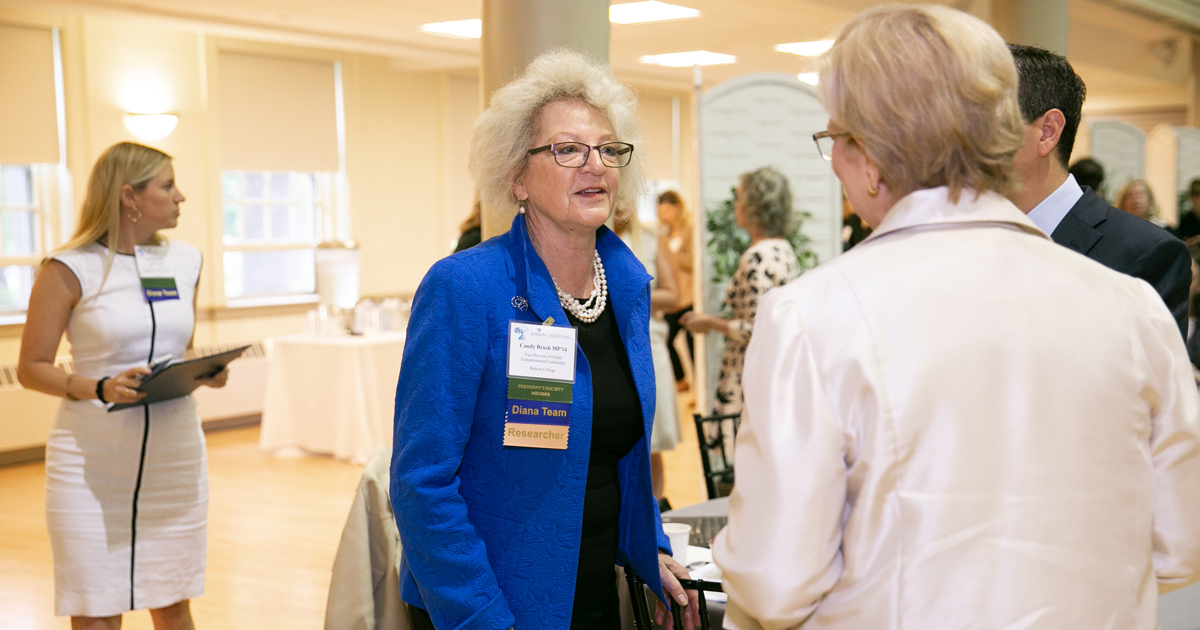Equality in Entrepreneurship? Not Yet

Much has changed for women entrepreneurs since the early 1980s.
In 1982, the first in-depth academic research was conducted looking at their lives. Before that, no one had ever taken the time to examine their experiences, their challenges, and their motivations.
Much also has changed for the person who did that research. Candida Brush may today be the vice provost of global entrepreneurial leadership at Babson College, but her work in 1982 lead to her first published paper, “The Woman Entrepreneur: Management Skills and Business Problems,” a couple of years later. The landmark research would go on to be cited in the Congressional Record, a fact that still makes her proud.
Through the subsequent years, Brush has continued to study women entrepreneurs and the strides they’ve made. “The biggest change is it is very acceptable for women to start businesses now,” says Brush, who also is Babson’s F.W. Olin Distinguished Professor of Entrepreneurship. “Women have owned businesses for decades, but they weren’t always encouraged to do so.”
Despite that encouragement, women still start businesses at a rate less than men, and one big challenge remains in their way: access to capital. Figuring out how to tear down that obstacle remains a mission for Brush. “There is a perception that men and women have achieved equality in entrepreneurship, and in lots of ways that’s true, but not in this one area,” she says.
So Much to Write
Astute visitors to Brush’s second-floor office in The Arthur M. Blank Center for Entrepreneurship may notice a clipboard resting on her desk. This nondescript clipboard, with its notes and lists, is actually an important key to organizing Brush’s day-to-day life. “There is always something going on,” she says.
Brush has much to keep her busy. For starters, there’s her writing. The research Brush conducted in 1982 eventually resulted in her first book, The Woman Entrepreneur, in 1986. That book, one she wrote as a part-time marketing instructor who would soon go off to start a PhD program at Boston University, has been followed by many other publications.
In all, Brush has written 13 books, 22 book chapters, and somewhere north of 150 articles in scholarly journals. “I’ve stopped counting,” says Brush, who retains a keen curiosity that fires her writing. “I love the exploration process and answering questions,” she says. “There are so many more articles and books I want to write.”
Brush also is a visiting professor at Norway’s Nord University and Ireland’s Dublin City University, as well as the co-founder of Babson’s Diana Project™, which conducts research and organizes events focused on women entrepreneurs. “When I get up in the morning, I am excited to go to work,” Brush says. “Everything about Babson is energizing.”
Coming to Campus
Brush started at Babson in 2005. She had been a professor at Boston University for roughly 14 years when Stephen Spinelli Jr. MBA’92, PhD, now Babson’s president but then a vice provost, called her. He was looking to hire a chair for the College’s Entrepreneurship Division, but Brush was happy at BU and told Spinelli she had no intention of leaving. “We’ll just have lunch,” Spinelli told her.
That one lunch, however, was just a start. More meetings followed. As she talked with people on campus, Brush appreciated just how big a part entrepreneurship played at Babson, compared with at BU, where Brush was the only entrepreneurship faculty member.
Brush would go on to be the Entrepreneurship Division chair for a decade before switching to her current role as vice provost. She now oversees five of Babson’s academic centers, with each focusing on different aspects of entrepreneurship, from family businesses to social enterprises. “The centers and institutes provide immersive learning experiences that allow students to amplify what they learn in the classroom,” Brush says.
Everyone’s Issue
No matter her role, Brush always is focused on women entrepreneurs. Helping them gain access to capital remains a paramount concern. Companies with women CEOs receive less than 3% of all venture capital funding, an alarming statistic that has remained unchanged for 20 years.
There are many reasons for that, including the fact that the venture capital community is insular and overwhelmingly male. “The network is a big problem. The VC industry is very small and concentrated in the coasts,” Brush says. “When there is a woman partner in a VC firm, it is far more likely to invest in women businesses.”
The Diana International Research Institute Impact Day convened more than 250 thought leaders on campus back in June to think of solutions to the funding deficit, and Brush currently is working on a report on the topic, sponsored by the Kauffman Foundation, that’s scheduled to be released in late November.
Whatever the solution, Brush knows that women can’t solve the funding issue alone. “It can’t be just women solving the problem for women. It has to be everyone in the ecosystem, men and women,” she says. “They all need to look at the opportunity to make the ecosystem more vibrant.”
To fund women entrepreneurs is to empower them and the impact they want to make on society. “The fact is if women don’t have access to those dollars to grow,” says Brush, “we could be missing opportunities to solve large social problems.”





